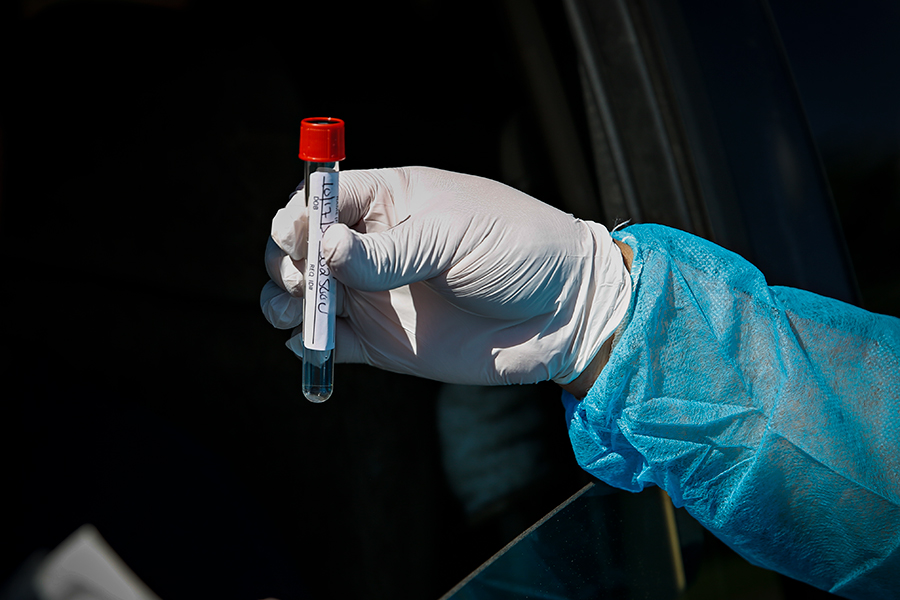County Keeping up with Contact Tracing, Expects Increased Testing
Nearly 400 residents are under watch as the state works to speed up test results
By Micah Drew
As of July 27, there were 391 residents of Flathead County, and 33 non-residents, being monitored after having contact with a COVID-19 positive individual.
“Our tracers are doing a good job; they’re knocking them out,” said Tamalee St. James Robinson, health officer for the Flathead City-County Health Department (FCCHD). “If we get a positive [case] we get investigations done that day.”
The FCCHD has been increasing its number of temporary workers to do contact tracing seven days a week.
When a positive test is reported to the county, investigators immediately get in touch with the individual to obtain a list of every person they’ve been in contact with at a distance of less than six feet for at least 15 minutes.
Each of those primary contacts is then told to quarantine for two weeks. They are monitored for symptoms of COVID-19 with mandatory temperature checks twice a day.
Health experts consider contact tracing to be one of the best ways to track and prevent the spread of diseases like COVID-19, but the ability to do so hinges on reliable and swift testing results.
“A two-day turnaround would be ideal,” Robinson said. Any longer than that, and contact tracing becomes almost irrelevant, according to health officials.
A backlog of tests and slow test results has become an issue across the state. Robinson said snapshot asymptomatic testing takes around two weeks to return results, and tests on symptomatic cases are taking between two and seven days.
“Delays in testing results for positives are unfortunate and may increase the number of close contacts before an individual can be informed to isolate,” said Alexandra Schwier, director for the Montana State Emergency Coordination Center.
To address the testing backlog, Gov. Steve Bullock announced last week that the state was partnering with Montana State University and Mako Medical, a North Carolina laboratory, to increase the number of surveillance asymptomatic tests that can be completed.
The new partnerships should allow for conducting around 1,500 new tests a day, with quick turnarounds. The company that Montana was previously collaborating with, Quest Diagnostics, was taking weeks to return results.
Like most states, Montana hasn’t been routinely reporting the turnaround time for test results. This is one measure that public health officials nationwide would like to see reported to better track virus spread.
In a report released by a former head of the Centers for Disease Control and Prevention (CDC), 15 critical metrics for tracking the spread of COVID-19 were identified, with states ranked based on how many they reported. Montana ranked in the bottom seven nationwide.
The analysis completed by Resolve to Save Lives, a New York nonprofit led by former CDC director Tom Frieden, reviewed available COVID-19 data that states release to the public and use to inform their decisions about mask-wearing and reopening businesses and schools.
In addition to turnaround time for test results, the report recommends that states report the percentage of hospital beds occupied by suspected and confirmed COVID-19 patients, estimated mask usage by the public and speed and frequency of contact tracing among positive cases.
The lack of consistency in reporting across counties and states increases the difficulty of tracking the disease.
“States around the country have done good work. They’ve been doing the challenging, hard, meticulous job of collecting, analyzing and presenting crucial information,” Frieden said during a press conference about the report. But, “we don’t have common standards, definitions, targets or accountability.”
Flathead County updates its COVID-19 statistics daily. The county reports total and active cases, current hospitalizations and number of contacts being currently monitored by the health department. Metrics are also broken down by age, male and female categories.
By contrast, Missoula County releases a much less comprehensive snapshot each day, only reporting new and active cases.
Because of the disparity in local reporting, Montana is limited in what it can report as a state. The statewide COVID-19 dashboard shows active and cumulative cases, as well as total tests conducted statewide, but doesn’t cover most of the 15 recommended metrics, including contact tracing and complete demographics.
“Given the current daily case volume, number of contacts is not as complete as we would like in order to share it publicly and the granularity of the testing information by county isn’t something we are able to provide,” Schwier said.
On the local level at least, Robinson is confident in her department’s ability to track cases in the Flathead, especially with the announcement of increased testing.
“To increase the state’s testing ability by 1,000 a day would be pretty significant for us,” said Robinson.